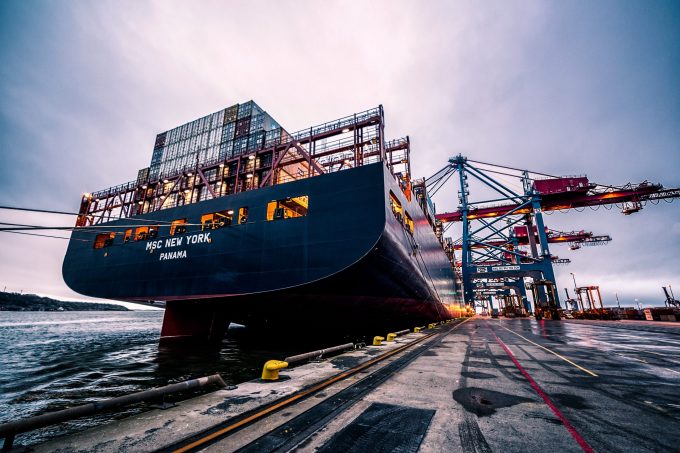Reliable Sea Freight to Fortaleza (BRFOR) , Itaguai (BRITA) in Brazil From Guangzhou, Shenzhen, Shanghai, Hong Kong, Macao, Haikou in China
Sea freight transport, or maritime transport, is the most common mode of transport in international trading. Since container shipping was introduced in 1956, it totally revolutionized the logistics industry and became a big contributor to globalization. Today, a whopping 90% of the goods traded are shipped by ocean via container shipping.

We will cover some of the basics in this blog.
Who’s involved in sea freight transport?
What can be shipped using sea freight?
Steps in sea freight transport
When to choose sea freight shipping?
How long does sea freight take?
How much is shipping by sea?
What are sea freight container sizes?
What are LCL and FCL?
What are some of the major sea shipping carriers?
Who’s involved?
Same as all types of freight transport, normally it involves seller (manufacturer), buyer (brands), ocean carriers, freight forwarders, custom brokerage, port authority, insurance providers.
What Can be Shipped?
Generally, most of the goods can be shipped using sea freight. Thou you should consult your freight forwarder or shipping agent to confirm. If your goods are weighed over 100 kgs, there’s a good chance and probably the best to use ocean freight.
However, there are restrictions applied to which commodities can be shipped by sea. Also, there are special containers designed for dangerous goods, perishable goods, and temperature-sensitive goods. Make sure your shipping agent understands what you are shipping.
How does Sea Freight Work
Goods packed and picked up
Container or Space booked
Goods Passing through customs at the port of origin
Goods loaded into full or shared containers
Shipping
Goods unloaded at the port of destination
Goods pass through customs again
Upon payment of duties and taxes, Goods got released for delivery
Goods are delivered in the original container or on pallets
When to Choose Sea Freight Shipping?
Sea freight shipping is often a cost-effective option and cheapest method when you have a bulk amount of goods to ship. But it takes longer to get to the destination, so you need to plan well beforehand if you choose ocean freight.
How Long Does Sea Freight Take?
The time of transit a sea freight takes is determined by a wide range of factors. Going through customs on both ends, vessel space availability, port capacity, all affect the time needed to move freight by the sea. Crossing the Pacific, for example, generally takes about 1 to 1.5 months depending on the weather.
If you are planning your shipping for a specific holiday or sales season, always remember to add at least a week’s time on both ends of the process to be safe.
How Much to Ship a Container Overseas?
Shipping by sea is probably the cheapest option for shipment over 200 kgs. But calculating the sea freight rates isn’t an easy task. Because there are so many variables and most of them keep changing depending on the time of the year. There are four major factors affecting sea freight rates:
Fuel:
Oil price change and it’s associated with bunker fuel. Plus the recent Low-sulfur regulation also affects the ocean freight rate.
Currency:
Exchange rates have a significant impact on sea freight rates. Fluctuations during the shipping might affect the rate.
Peak Season:
High seasonal demands for certain goods affects the rate and space. What’s cheap in low seasons will be charged premiums during high ones.
Capacity:
Sea shipping capacity is like a commodity. The dynamic of supply and demand has huge power over the freight rate. If you absolutely want your goods to be shipped when there’s no space, you will pay the premium to get the spot.
There are plenty of online marketplaces and tools you can use to get shipping quotes. If you are looking for general idea about container rates, you can check it out here.
What are Container Sizes?
There are varying sea freight container specifications for the different containers available. Depending on your cargo type, volume, and shape, certain sea freight container sizes may be more appropriate than others.
In case you’d like to figure out what container to pick yourself, here’s the standard container specification table (Source: Wikipedia)

From the standard 20-ft, 40-ft, and 40-ft high cube shipping containers to open tops and flat racks, there are many ocean freight container dimensions that you can choose from that will suit your sea freight shipment.
What is LCL and what is FCL?
LCL and FCL are two types of shipments for ocean freight. LCL or Less Than Container Load shipments suit the goods which are too little to fill a whole container. The goods are loaded into a shared container with other shipments. FCL or Full Container Load, on the other hand, is good for high volumes of goods that can fill an entire container. This type generally gets dedicated container(s) for itself.
Major Sea Shipping Carriers
Sea carriers are key players in international logistics. These carriers move goods from one place to another all around the world by sea. Here are the top ocean shipping carriers heading in TEU capacity and market share:
Maersk Line
Mediterranean Shipping Company (MSC)
COSCO
CMA CGM
Hapag Lloyd
Ocean Network Express (ONE)
Evergreen Marine
Yang Ming Marine Transport Corporation
Hyundai M.M
Pacific International Line (PIL)
How Can Freight Forwarders Help?
International shipping is a very specialized industry and it’s full of subcategories. For anyone who’s not familiar with overseas shipping, doing it yourself can be very daunting. Working with professional international freight forwarders not only saves you the potential trouble, but it can also save you time and money.
From pickup, packaging, and delivery, documentation, communication with carriers and ports, freight forwarders really eliminate all the hassles for you. If you are unfamiliar with freight forwarding, check out this article to learn more.
-
RELATED NEWS